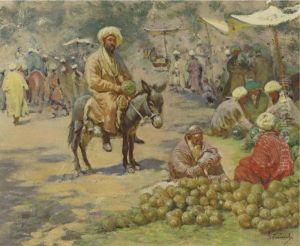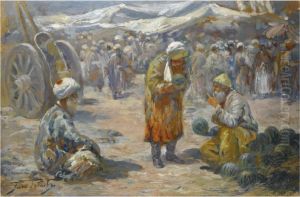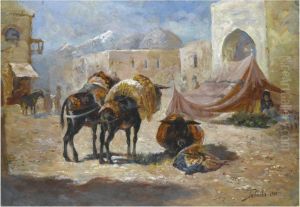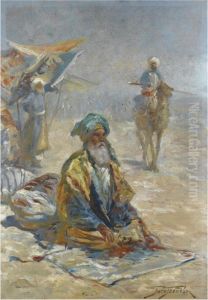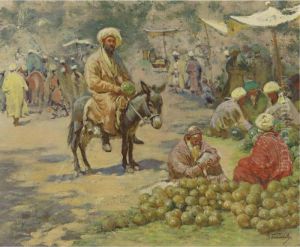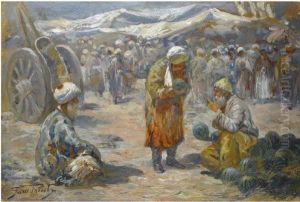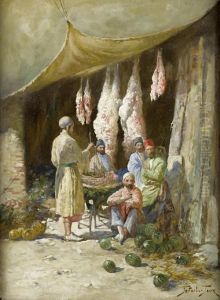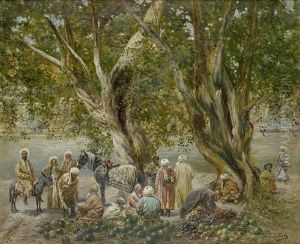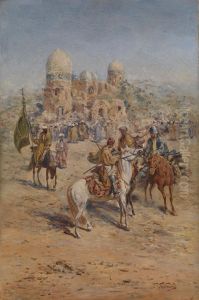Georgii Ivanovich Gabashvili Paintings
Georgii Ivanovich Gabashvili, a prominent Georgian realist painter, was born in 1862 in Tbilisi, Georgia. Emerging from a country with a rich cultural heritage, Gabashvili's work was deeply influenced by the landscapes, people, and traditions of his homeland. He is particularly renowned for his vivid depictions of Georgian life, landscapes, and architecture, capturing the essence of the late 19th and early 20th centuries in Georgia.
Gabashvili embarked on his artistic journey at the Tbilisi School of Art before continuing his education at the prestigious Academy of Arts in Saint Petersburg, Russia. His studies there, under the tutelage of some of the most renowned Russian artists of the time, were instrumental in shaping his realistic approach to painting. Gabashvili's style was characterized by a keen attention to detail, vibrant colors, and a profound sense of realism, setting him apart from his contemporaries.
Throughout his career, Gabashvili remained deeply connected to his Georgian roots. His paintings often featured scenes from everyday life in Georgia, including local festivals, traditions, and the diverse landscapes of his homeland from the bustling streets of Tbilisi to the serene countrysides. These works not only provided a visual record of Georgian culture at the time but also played a crucial role in introducing Georgian life and landscapes to a broader audience.
Gabashvili's contributions to art were not limited to his paintings. He was also a dedicated educator, teaching at the Tbilisi School of Art where he had once been a student. His passion for art education helped nurture the next generation of Georgian artists, ensuring the continuation of the country's artistic legacy.
Gabashvili's work was widely recognized during his lifetime, and he participated in numerous exhibitions both in Georgia and abroad. His paintings are now held in several prestigious museums and collections around the world, celebrated for their historical value and artistic merit.
Georgii Ivanovich Gabashvili passed away in 1936, leaving behind a rich legacy as one of Georgia's most cherished artists. His ability to capture the spirit of Georgian culture, combined with his mastery of realism, has ensured his place in the annals of art history as a crucial figure in the development of Georgian national art.
